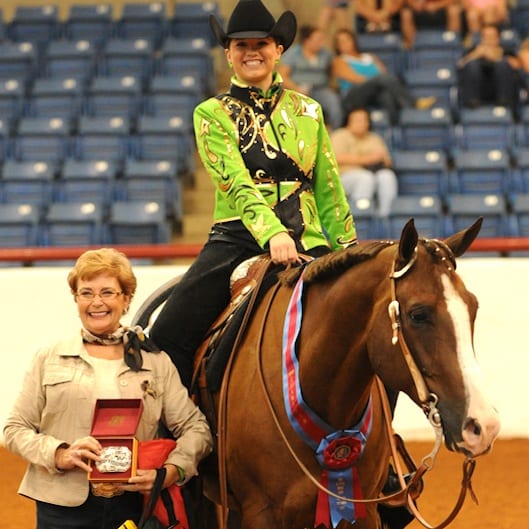Over the years, there have been heated discussions for and against allowing solid Paint-Bred horses (SPB) to show in the regular registry classes at the APHA shows.
According to the APHA rulebook, paint horses are allowed to be registered in the regular registry if they have definite “natural Paint markings” that must extend more than two inches in the prescribed zone listed in the rulebook. Natural Paint markings is defined as, “predominant hair coat color with at least one contrasting area of solid white hair of the required size with some underlying unpigmented skin present on the horse at the time of its birth.”
Any foal not meeting these requirements may only be registered with APHA as a solid Paint-Bred–leaving it an investment gamble for many paint breeders who may never be able to recoup their money on horses not meeting the color requirements. According to recent APHA breeding records, the yearly average of solid Paint-bred foals registered was approximately 36 percent of all foals born each year. Considering the fact that many owners do not register their solid Paint-bred foals, the percentage of solids born is significantly higher than 36 percent.
Also, due to low numbers in the solid Paint-Bred classes, people are reluctant to get involved because they are tired of showing against themselves and many SPB exhibitors feel unwelcome at APHA shows.
GoHorseShow asked several people involved in the paint industry about their thoughts on this controversial issue. Please let us know what you think in the comments section of the article and vote in our poll at the end of the article.
 Garth Gooding–The likelihood of it (APHA allowing solid Paint-Bred horses to show in the regular registry classes at the APHA shows) actually happening are probably pretty slim. However, I feel the positives would far outweigh the negatives if done correctly. I think that it is vital to the growth of APHA for several reasons. There is a shortage of quality entry level horses to attract the newcomer to the breed and there is a shortage of upper level horses to keep the upper level exhibitors that we already have showing. This is because economically it’s hard to justify raising a paint when you factor in the risk of raising a solid baby. I feel if we would allow the solids that are sired by a paint stallion and only a paint stallion to compete, that would help the breeding market immensely. By only allowing ones sired by a paint stallion to compete, everyone wouldn’t just jump ship and breed their paint mares to quarter horse stallions. Also, I would make these horses pay a licensing fee every year to compete whether it be $100, $250 or $500 and put that money directly into the breeders trust, and the solid paints would not be able to compete for any of the breeders trust money. That way there is still incentive to show loud colored horses and breed for loud colored horses. To me that would solve a lot of the tough problems APHA is facing right now.
Garth Gooding–The likelihood of it (APHA allowing solid Paint-Bred horses to show in the regular registry classes at the APHA shows) actually happening are probably pretty slim. However, I feel the positives would far outweigh the negatives if done correctly. I think that it is vital to the growth of APHA for several reasons. There is a shortage of quality entry level horses to attract the newcomer to the breed and there is a shortage of upper level horses to keep the upper level exhibitors that we already have showing. This is because economically it’s hard to justify raising a paint when you factor in the risk of raising a solid baby. I feel if we would allow the solids that are sired by a paint stallion and only a paint stallion to compete, that would help the breeding market immensely. By only allowing ones sired by a paint stallion to compete, everyone wouldn’t just jump ship and breed their paint mares to quarter horse stallions. Also, I would make these horses pay a licensing fee every year to compete whether it be $100, $250 or $500 and put that money directly into the breeders trust, and the solid paints would not be able to compete for any of the breeders trust money. That way there is still incentive to show loud colored horses and breed for loud colored horses. To me that would solve a lot of the tough problems APHA is facing right now.
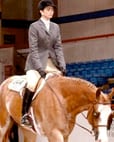 Tara Eubank–I saw where APHA was considering to allow grade horses to show if they have color which I think is not the best idea put forth to increase entries or revenue for APHA. It seems like APHA would be much better off promoting solids rather than grades, maybe something like the Appaloosas do for their non-colored horses?
Tara Eubank–I saw where APHA was considering to allow grade horses to show if they have color which I think is not the best idea put forth to increase entries or revenue for APHA. It seems like APHA would be much better off promoting solids rather than grades, maybe something like the Appaloosas do for their non-colored horses?
 Kelly Boles Chapman–Clearly the environment is ripe to position well-thought out and well-executed creative strategies to address the solid Paint-Bred (SPB) issue. Every new program or opportunity that is presented, such as the proposed Performance License, quickly morphs into a catch-all of frustration with the SPB issue. I think it’s a historic and chronic challenge with APHA. I think people need to think outside the box at least to discuss conceptual ideas. It’s true that the value of SPB’s is certainly less than regular registry. I would wonder if people could do a visioning session perhaps on possibilities, then assess what might be realistic plans, then form a strong implementation plan. For example, what if SPB’s could show concurrently in novice classes, or challenge and stakes classes at the APHA World Shows? We need to discuss the pros and cons in a constructive manner and try to be open to all types of new ideas that could help our industry and the solid Paint-Bred horses. Also, this may be a time to really define what being a breed registry means. The fact there is around 36 percent of solid Paint-Breds registered every year is far too large of a number of registrations to not look at ways to mainstream them into regular classes.
Kelly Boles Chapman–Clearly the environment is ripe to position well-thought out and well-executed creative strategies to address the solid Paint-Bred (SPB) issue. Every new program or opportunity that is presented, such as the proposed Performance License, quickly morphs into a catch-all of frustration with the SPB issue. I think it’s a historic and chronic challenge with APHA. I think people need to think outside the box at least to discuss conceptual ideas. It’s true that the value of SPB’s is certainly less than regular registry. I would wonder if people could do a visioning session perhaps on possibilities, then assess what might be realistic plans, then form a strong implementation plan. For example, what if SPB’s could show concurrently in novice classes, or challenge and stakes classes at the APHA World Shows? We need to discuss the pros and cons in a constructive manner and try to be open to all types of new ideas that could help our industry and the solid Paint-Bred horses. Also, this may be a time to really define what being a breed registry means. The fact there is around 36 percent of solid Paint-Breds registered every year is far too large of a number of registrations to not look at ways to mainstream them into regular classes.
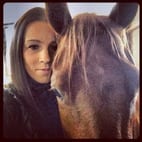 Claire Binkowski–The issue of solid Paint-Bred horses being allowed to show in regular classes has been brought up time and time again, yet to my knowledge, APHA has been strongly against it. While I can’t speak for APHA, my understanding is that they argue horses need to have color to preserve the integrity of the breed or something along those lines. However, according to APHA’s website, Paint horses have a “strict bloodline requirement” which would imply that it is more than simply a color registry like Pinto. If that’s the case, then in my opinion, solid Paints should be allowed to show in regular classes. For example in the halter–the lack of color could be viewed as undesirable much like horses with excessive white can’t show halter in AQHA. Most people I have talked to seem to feel the same way I do, rather than trying to increase numbers through this new proposed rule to allow horses to show that are not even registered with APHA–grade horses with qualifying white markings. Why not allow horses that are registered with APHA and carry the bloodlines show in the regular classes?
Claire Binkowski–The issue of solid Paint-Bred horses being allowed to show in regular classes has been brought up time and time again, yet to my knowledge, APHA has been strongly against it. While I can’t speak for APHA, my understanding is that they argue horses need to have color to preserve the integrity of the breed or something along those lines. However, according to APHA’s website, Paint horses have a “strict bloodline requirement” which would imply that it is more than simply a color registry like Pinto. If that’s the case, then in my opinion, solid Paints should be allowed to show in regular classes. For example in the halter–the lack of color could be viewed as undesirable much like horses with excessive white can’t show halter in AQHA. Most people I have talked to seem to feel the same way I do, rather than trying to increase numbers through this new proposed rule to allow horses to show that are not even registered with APHA–grade horses with qualifying white markings. Why not allow horses that are registered with APHA and carry the bloodlines show in the regular classes?
 Julie Campbell Harnish–It would ruin our breed if they got to show in the color classes. However, for years, Brent and I have felt they should be allowed to show in the novice classes, both youth and amateur. Those are the beginner classes and the step up from open and 4-H. Let them come. Let them show. It puts a nice show record on a solid Paint-Bred and when they point out, they go back to the open shows, or, they like it so much, they buy a colored horse and move up. Also, the solid Paint-Bred has a nice show record and has value.
Julie Campbell Harnish–It would ruin our breed if they got to show in the color classes. However, for years, Brent and I have felt they should be allowed to show in the novice classes, both youth and amateur. Those are the beginner classes and the step up from open and 4-H. Let them come. Let them show. It puts a nice show record on a solid Paint-Bred and when they point out, they go back to the open shows, or, they like it so much, they buy a colored horse and move up. Also, the solid Paint-Bred has a nice show record and has value.
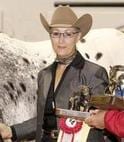 Tina Price–This has been a hot issue for a number of years, and no, I don’t see the solid horses ever showing with the regular registered horses. Many people site the ApHC, the fact that they allow the solids to show with the colored horses, but we are a different breed, genetically speaking, and we also have the additional problems with horses being registered with the Quarter Horse association as well. The problem, in a nut shell, is that if APHA does not require white, few people will breed for it. When a straight bred Quarter Horse, solid, with Paint papers wins, that’s what everyone is going to want. We have always suffered complaints that horses with ‘too much color’ are penalized by judges and there has always been an attraction to show horses with less color. One last thing–this is not an easy issue. It is very complex, and it does affect every breeder in the association. When up to 50% of your foal crop is a failure (lack of color), it does make it hard to be profitable.
Tina Price–This has been a hot issue for a number of years, and no, I don’t see the solid horses ever showing with the regular registered horses. Many people site the ApHC, the fact that they allow the solids to show with the colored horses, but we are a different breed, genetically speaking, and we also have the additional problems with horses being registered with the Quarter Horse association as well. The problem, in a nut shell, is that if APHA does not require white, few people will breed for it. When a straight bred Quarter Horse, solid, with Paint papers wins, that’s what everyone is going to want. We have always suffered complaints that horses with ‘too much color’ are penalized by judges and there has always been an attraction to show horses with less color. One last thing–this is not an easy issue. It is very complex, and it does affect every breeder in the association. When up to 50% of your foal crop is a failure (lack of color), it does make it hard to be profitable.
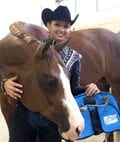 Shannon Gillespie–This has been an ongoing question, and it comes back to the value of the color horse. The opposition doesn’t want the solids to water down the value of a colored paint. I feel that there does need to be some incentive for solid horses to get trained up and shown–just offering those classes at shows really hasn’t done much to promote them. I think that if they were allowed in all non-pointed classes-such as futurities, stakes, slots, and maybe even novice youth and walk trot classes, we would see an increase in them being shown and create a market for them. This also wouldn’t affect the value of a colored paint. As far as the other proposal about letting non-APHA horses compete in certain events, I am totally against this. If those events are desperate for entries, I feel it is a much better move for the association to let the solids show together, but not earn the same points. I don’t feel that the membership of APHA will ever allow solids to be shown in all the same events as a colored horse. It would dilute the market way too much and basically ruin established breeding programs. There are too many people who would violently oppose this!
Shannon Gillespie–This has been an ongoing question, and it comes back to the value of the color horse. The opposition doesn’t want the solids to water down the value of a colored paint. I feel that there does need to be some incentive for solid horses to get trained up and shown–just offering those classes at shows really hasn’t done much to promote them. I think that if they were allowed in all non-pointed classes-such as futurities, stakes, slots, and maybe even novice youth and walk trot classes, we would see an increase in them being shown and create a market for them. This also wouldn’t affect the value of a colored paint. As far as the other proposal about letting non-APHA horses compete in certain events, I am totally against this. If those events are desperate for entries, I feel it is a much better move for the association to let the solids show together, but not earn the same points. I don’t feel that the membership of APHA will ever allow solids to be shown in all the same events as a colored horse. It would dilute the market way too much and basically ruin established breeding programs. There are too many people who would violently oppose this!
 Karen Ricketts–To be honest, I doubt it will ever happen. All the rule changes to even let them show together in the Breeder’s Futurity or in non-point classes have been soundly defeated. The argument is a Paint should look like a Paint, but if you watch the regular classes, some of those horses have less visible white than the “solid” horses. There’s been some talk among SPB enthusiasts that if they have two Paint parents, those horses at the very least should be allowed to show in the regular classes. Or if they test positive for a pattern (slipped tobiano, sabino, overo, etc.), those horses should be able to show, or show on a permit like Appaloosas do, to promote breeding color to color. A third to a half of all foals born each year are solid–many do not get registered in order to improve the sire’s color percentage. Those horses are out there somewhere. APHA has made strides recently to improve the opportunities for solids – required amateur classes, the half-point rule, adding Top 10 Amateur and Top 10 Youth awards, but SPB exhibitors have not been very welcome at many of the venues, so many of them have probably decided to show elsewhere.
Karen Ricketts–To be honest, I doubt it will ever happen. All the rule changes to even let them show together in the Breeder’s Futurity or in non-point classes have been soundly defeated. The argument is a Paint should look like a Paint, but if you watch the regular classes, some of those horses have less visible white than the “solid” horses. There’s been some talk among SPB enthusiasts that if they have two Paint parents, those horses at the very least should be allowed to show in the regular classes. Or if they test positive for a pattern (slipped tobiano, sabino, overo, etc.), those horses should be able to show, or show on a permit like Appaloosas do, to promote breeding color to color. A third to a half of all foals born each year are solid–many do not get registered in order to improve the sire’s color percentage. Those horses are out there somewhere. APHA has made strides recently to improve the opportunities for solids – required amateur classes, the half-point rule, adding Top 10 Amateur and Top 10 Youth awards, but SPB exhibitors have not been very welcome at many of the venues, so many of them have probably decided to show elsewhere.
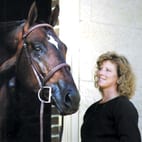 Robin DeGraff–I understand trying to keep the color breed a color breed–meaning a paint has to have registerable white. However, the fact of the matter is that in the case of horses carrying one copy of the gene that causes them to have color, or to be a LW carrier, or a HERDA carrier or whatever. It means that you can expect 50% to be carriers, so with that in mind, we should expect that 50% of the horses will be solid. It should not be a throw a way horse. It has the same genetic make up and our industry/our breeders should not have a 50/50 shot of being able to get a return on their investment (i.e… cost of breeding, cost of carrying the foal for a year, cost of foaling and cost for foal to become of any age for sale). The other part of having a ‘throw away’ foal if it does not have registerable color is the issue of an unwanted horse–therein lies a larger crime in my mind.
Robin DeGraff–I understand trying to keep the color breed a color breed–meaning a paint has to have registerable white. However, the fact of the matter is that in the case of horses carrying one copy of the gene that causes them to have color, or to be a LW carrier, or a HERDA carrier or whatever. It means that you can expect 50% to be carriers, so with that in mind, we should expect that 50% of the horses will be solid. It should not be a throw a way horse. It has the same genetic make up and our industry/our breeders should not have a 50/50 shot of being able to get a return on their investment (i.e… cost of breeding, cost of carrying the foal for a year, cost of foaling and cost for foal to become of any age for sale). The other part of having a ‘throw away’ foal if it does not have registerable color is the issue of an unwanted horse–therein lies a larger crime in my mind.
 Julie Black— I can understand the reasoning behind maintaining the integrity of the breed through color requirements, as it is a color breed. However, on the other hand, there are a boat load of great horses out there now (SPB) that really have no value or marketability due to this rule, regardless of the fact that they are in indeed “paints”. Not to mention that it makes breeding paints a huge gamble where so much risk already resides. With declining numbers at APHA events, the world shows in particular, I would think that this would be something that needs to seriously be considered. I’m not 100% certain on the details, but I believe at one point ApHC was facing the same issue. If I’m not mistaken, there was a huge drop in their numbers and they now allow horses not meeting those requirements to show with a permit–giving those horses and owners the opportunity to show while still generating income with permit fees for the association. Seems like a win-win to me.
Julie Black— I can understand the reasoning behind maintaining the integrity of the breed through color requirements, as it is a color breed. However, on the other hand, there are a boat load of great horses out there now (SPB) that really have no value or marketability due to this rule, regardless of the fact that they are in indeed “paints”. Not to mention that it makes breeding paints a huge gamble where so much risk already resides. With declining numbers at APHA events, the world shows in particular, I would think that this would be something that needs to seriously be considered. I’m not 100% certain on the details, but I believe at one point ApHC was facing the same issue. If I’m not mistaken, there was a huge drop in their numbers and they now allow horses not meeting those requirements to show with a permit–giving those horses and owners the opportunity to show while still generating income with permit fees for the association. Seems like a win-win to me.
 Blake Carney–This is a hot button issue with a lot of people. I think that APHA distinguishes itself as a bloodline registry, not a color registry, however they do have color requirements for showing. For years, I never understood what difference it made until I went to the youth world this year while the Appaloosa Nationals were showing. A customer and I watched the amateur western pleasure and out of about 26 horses, only one had Appaloosa characteristics. It really looked like a quarter horse class. They allowed their solids to start showing as long as they had other qualifying characteristics, and their color is nearly gone. I’m certainly no expert, but it seems that allowing solids in would definitely increase entries, but it would decrease the amount of colored horses we breed for. There has always been a stigma in the associations that, “less color wins” but a good horse is a good horse. I have certainly seen some horses on YouTube that I thought were excellent and then got really disappointed that they were solids.
Blake Carney–This is a hot button issue with a lot of people. I think that APHA distinguishes itself as a bloodline registry, not a color registry, however they do have color requirements for showing. For years, I never understood what difference it made until I went to the youth world this year while the Appaloosa Nationals were showing. A customer and I watched the amateur western pleasure and out of about 26 horses, only one had Appaloosa characteristics. It really looked like a quarter horse class. They allowed their solids to start showing as long as they had other qualifying characteristics, and their color is nearly gone. I’m certainly no expert, but it seems that allowing solids in would definitely increase entries, but it would decrease the amount of colored horses we breed for. There has always been a stigma in the associations that, “less color wins” but a good horse is a good horse. I have certainly seen some horses on YouTube that I thought were excellent and then got really disappointed that they were solids.
 Shannon Vroegh–That’s a tough question because so many quarter horse people are trying to get double registered horses. A lot of breeding stock are quarter horses which makes it tough for a true paint. On the other side, I hate to see them lose their value completely. I know NSBA just made it so you can’t show certain breeding stock (PtHA, PHBA–see Editor’s Note below) in their color classes now too. I only see it getting worse for the breeding stock horses.
Shannon Vroegh–That’s a tough question because so many quarter horse people are trying to get double registered horses. A lot of breeding stock are quarter horses which makes it tough for a true paint. On the other side, I hate to see them lose their value completely. I know NSBA just made it so you can’t show certain breeding stock (PtHA, PHBA–see Editor’s Note below) in their color classes now too. I only see it getting worse for the breeding stock horses.
Editor’s Note: From NSBA rulebook:
56. COLOR HORSE–Color Horse classes are available for class approval. They can be for any and all age of horse and any and all divisions.


